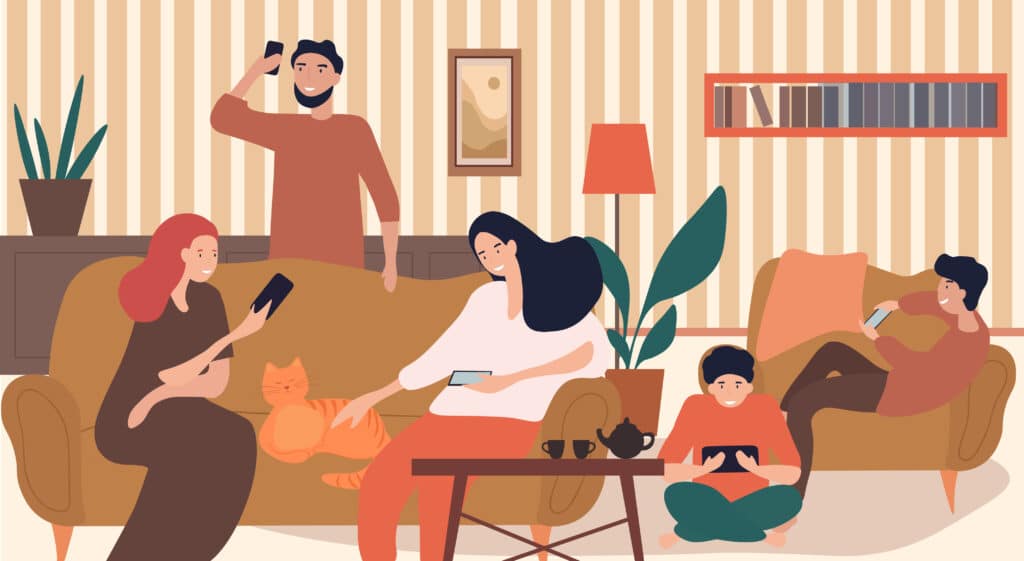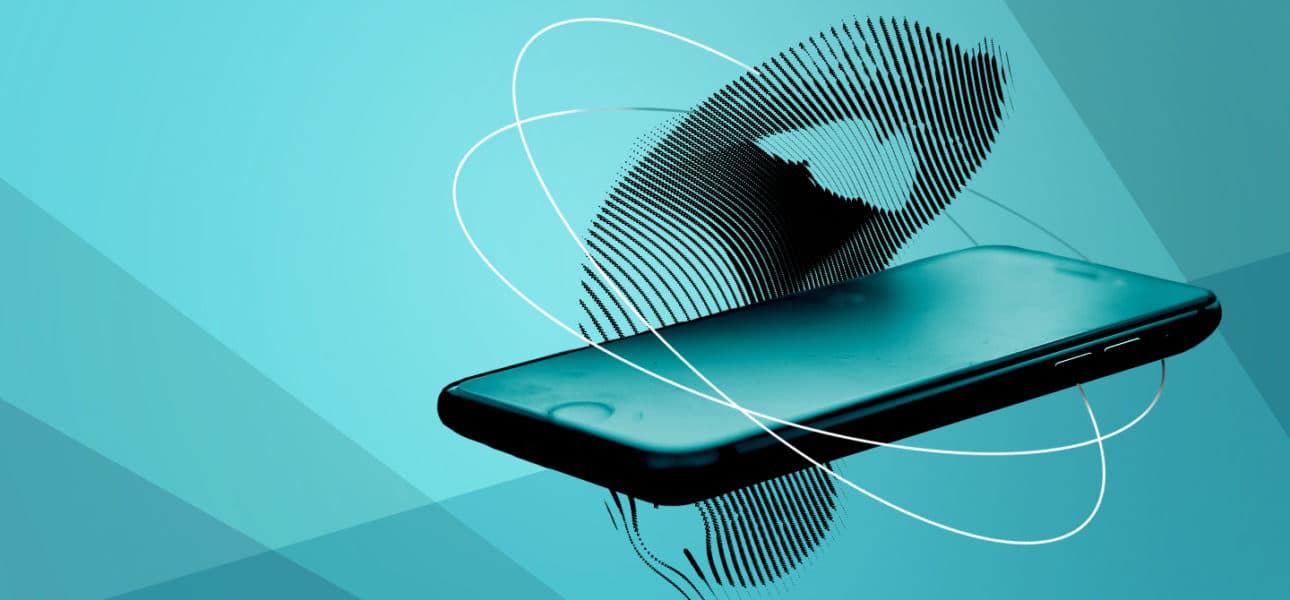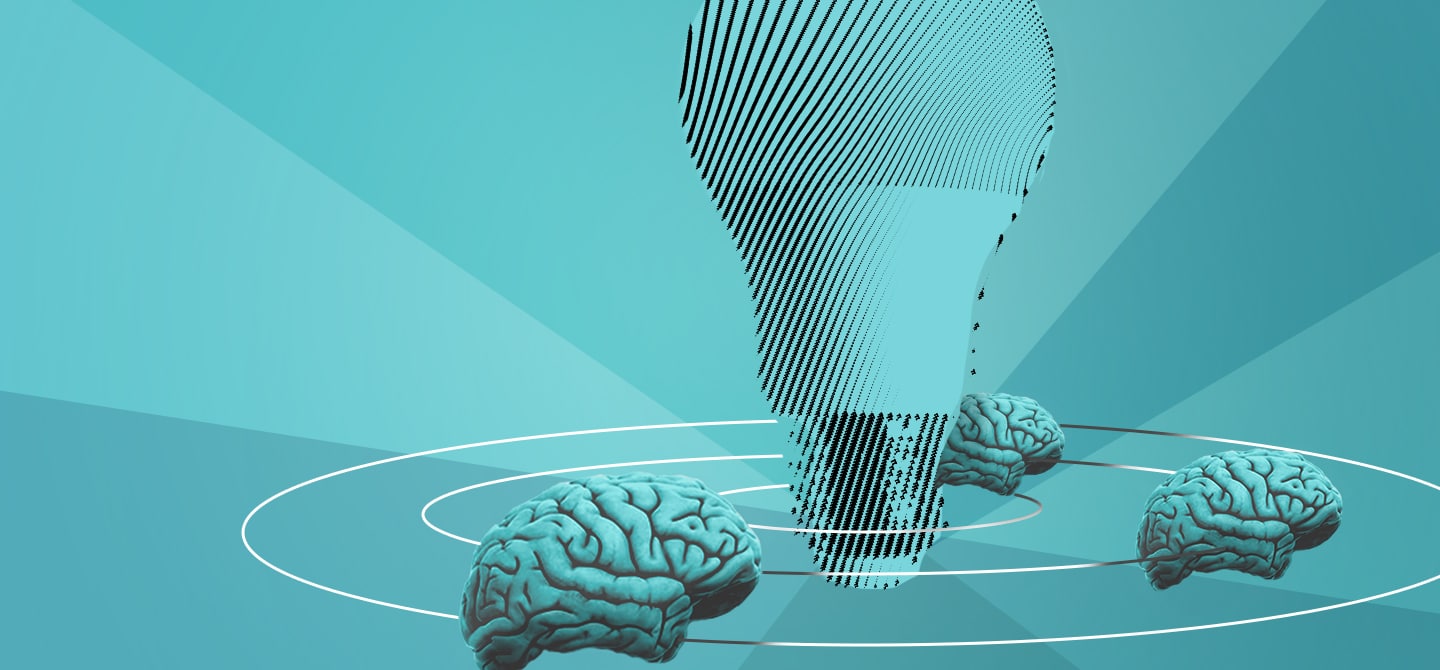“Above all else, the most addictive aspects of smartphones are their social functions,” states Samuel Veissière, an evolutionary anthropologist and assistant professor of psychiatry at McGill University. His research focuses on the mechanisms behind smartphone and Internet addiction; from dopamine and over-activation of reward circuits, to ‘hyper sociability’ to hypnotic suggestibility 1.
He explains that the phenomenon is driven by more than just the dopamine hits that we receive from the variable rewards of notifications – as is the common theory. Rather, he argues that the habit of picking up our phones has been ingrained through Pavlovian-type conditioning. “When people are waiting for a bus, or experience a situation of boredom, they tend to pick up their phone and engage in mindless browsing to seek stimuli and rewards”. Samuel Veissière’s research aim is to uncover the “substance” that makes many of us so addicted that we are willing to sacrifice basic needs like food, sleep, and even sex.
Social media and public health
Whilst there is still some debate in the scientific community, there is an increasing body of evidence directly linking smartphone and social media use to mental health problems like anxiety and depression. Studies also point out links to impaired cognition and memory and sleep problems, going so far as to highlight an epidemic of loneliness and decreased face-to-face interaction – which further impairs overall health and well-being. One thing we do know to be a major factor is that smartphones are largely used to access social networking sites, known to drive us to addictive and anxiogenic loops of upward social comparison.
In a theoretical paper published in 2019 in the prestigious journal Behavioural and Brain Sciences 2, his research team presented a new paradigm on the ‘co-evolution’ of cognition and culture. Scientists have come to understand that organisms function in the world by generating ‘predictions’ about behaviours that different environmental stimuli afford. Hence, minimising any unwanted surprises in an inherently uncertain universe so as to ensure survival. While scientists were already describing the brain as a “prediction” machine, Veissière and colleagues specified that human brains and bodies do not navigate the world alone, but collectively, by outsourcing relevant behavioural predictions to a network of other brains.
The basic idea is that humans (unlike chimpanzees!) are not very good at individual problem-solving, and instead need to draw on a large repertoire of cumulative knowledge and skills passed down over the generations. As such, human brains seek to constantly update their beliefs in response to what others around them are doing – which materialises as us comparing ourselves to others and adjusting behaviour accordingly.
Veissière explains that human cognition and culture “already work like the Internet”, in that human minds are already designed to outsource (“browse” and “download”) information. We scan the social world for behavioural guidelines and a sense of purpose and identity. “Social media and most of the Internet provide such a guide. Even when we are not directly interacting with people we know – for example, when we watch YouTube videos or scroll through a celebrity’s Instagram or Twitter feed – we are identifying socially relevant information that will enable us to function optimally according to the norms and values of our group,” he states.

Smartphone addicts
To measure smartphone addiction, Veissière and his team use a “problematic smartphone use” scale, which assesses the extent to which a phone interferes with everyday life. To put things into perspective, only 0.6% of the world population are addicted to hard drugs like cocaine, opiates, and amphetamines 3. In comparison, Veissière and his team found that over 40% of the sample in a university student population showed signs of smartphone addiction. Moreover, in a study of 24 countries around the world, addiction rates have been increasing exponentially since 2014, with China exhibiting the highest rates by far 4.
He compares smartphone addiction with cultural assumptions about smoking. “Fifty years or so into the future, I imagine we will see people in films stuck to their smartphones and find it as unsettling as we do now when we watch old movies where people are smoking in offices and trains.”
“The arrival of the iPhone in 2007 precipitated our species’ transition into the mobile digital niche,” he states, “which ushered us into deep, radical transformations of all aspects of our lives that we have yet to fully comprehend.” He considers smartphone addiction to be a major public health and public safety issue going as far as claiming that, “the internet should be regulated as if it were a hard drug. All devices should display large, evidence-based health-warnings, prescribed consumption quantities by age and at-risk group, and be heavily taxed over a set of hours per day.”
For him, “children in particular should be legally protected from screens in the same way they are protected from tobacco, alcohol, and other drugs than can harm their development. Internet time should be limited to structured research in schools. Current pediatric guidelines prescribing a maximum of two hours of a day for children are not conservative enough.” He says that “parents who want to keep in touch with their children can give them a simple mobile phone, but no smartphone before turning 18 ought to be a new cultural trend.”
Digital detox
In the meantime, Samuel Veissière says that the short-term solution before we see public health intervention is to promote “self-regulation”. That is to say finding a healthy balance between our digital and physical lives. In his most recently study published this year, his team carried out a behavioural intervention aimed at studying the effects of a ‘digital detox’ 5. “We measured different factors before and after participants stopped using their smartphones,” he explains. The team wanted to find out whether the negative effects of smartphones use could be reduced by targeting the mindless, automatic aspects of compulsive smartphone use. Their results point to a marked improvement in well-being, sleep and working memory as well as vast reductions in screen time and problematic smartphone after a detox of just two weeks.
The participants of the study are mainly university students in the 18–30 age bracket – the category of people whose mental health is most affected by smartphone use. So, whilst it may not be representative of some ‘high-concern’ groups like children, it does give an insight into what can be done to reduce negative effects.
“We used our results to provide a list of ten simple steps which smartphone users can apply to make it more difficult for themselves to connect,” the researcher advises. Much of the steps are designed to make the process of using a smartphone more effortful and less pleasurable, so as to decrease automatic habits. Since his research indicates that smartphone addiction is due to a conditioned action, the reflex can be broken (or de-conditioned) by making it more challenging.
“These include removing the touch ID to make it harder to open the screen; turning off notifications; switching the screen to grey scale; removing social media apps and limiting their use to a computer; and keeping phones outside the bedroom when sleeping. Essentially, the objective is to reduce your phone use to functions that are necessary for work and family and try to move as many activities as possible to ritually marked time on a computer, or face-to-face whenever possible. A sort of ‘digital minimalism’, if you will.”








